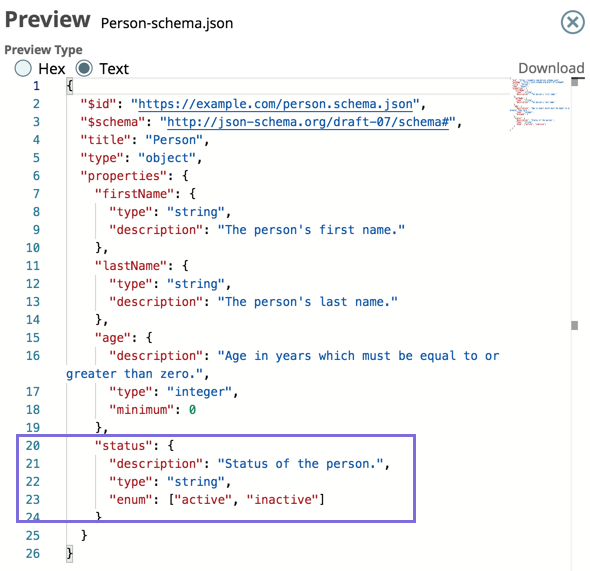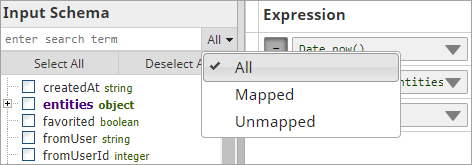On this Page
As part of the Mapper Snap, the mapping table makes it easier to do the following:
When you use the Mapper, ensure the following:
To let the SnapLogic Platform make the best effort at mapping, click AutoLink. See AutoLink for more information.
To manually map fields:
To merge two input fields into one output, you can select and drag one field out, then drag another input field into the same Expression field and they are combined.
To insert a new line between entries, use the unicode value of \u000A, as in: $element + "\u000A" + $element
To directly map a field from one schema to the other, click and drag the field from either schema over to the other schema and the mapping is automatically created. You can also drag fields from the input schema to the target path.
The schema generated by a downstream Snap populates a list of suggestions for the Expression column. Available when the New Form UI is enabled through the User Settings dialog in SnapLogic Designer, this functionality is useful when the Mapper Snap is followed by Snaps with custom fields, such as the JSON Formatter or NetSuite Snaps.
For example, the following schema contains an enum field with multiple keys: "active" and "inactive".

Toggle off the Expression button in the Expression Builder, then select the field with multiple keys, and a dropdown list of the multiple keys in that field.

You can any of the following features to select multiple fields in an Input or Target schema:
By clicking the arrow under the mapping table, you can get a preview of what your input and target schemas look like.
The Expression builder preview is driven by the Dynamic Validation option in SnapLogic Designer User Settings. |
Non-expression targets (= toggle off) are treated as literal values and do not impact the mapped/unmapped field list. |
To search for a specific field in either schema, enter the term in the appropriate search field. You can use the file path wildcards * and ? in a search.
Because searches are based on full key names, not just the node title, searches may also select a node's ancestry. For example, if you have a tree such as:
+ Parent
+Child
- Grandchild
Searching for "Parent" returns all three items since the key names are $Parent, $Parent.Child, and $Parent.Child.Grandchild.
As of the Winter 2018 release, you can use these features to select multiple fields in an Input or Target schema:
Watch the videos:
SelectAll.mp4
ShiftClick.mp4
To filter whether to see all, mapped, or unmapped fields, use the drop-down next to the search field.

Additionally, once a field is mapped, it is bolded and the color is changed if you are viewing All.

If you click the mapped field in the schema, the row in the mapping table and the target are highlighted.

If an array of data is coming into the Mapper (Data) Snap, when you drag them into the table, a JSONPath expression is created to handle it.
By clicking the arrow under the mapping table, you can get a preview of what input and target schemas look like.
